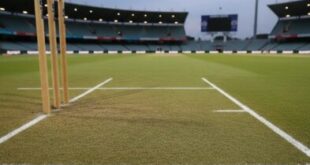Athletes retire quite early in their 30s or early 40s, which is why post-retirement planning becomes necessary
As compared to the general workforce that retires around 60 years of age, athletes and sportspersons retire in their middle age. In extreme sports like gymnastics and figure skating, the retirement age is even lower at around mid-20s. To lead an engaging and meaningful life after retirement, it becomes important to choose a second career. Let us take a look at some good options in terms of what athletes can do after their retirement.
Coaching and training opportunities – Many athletes in India turn into coaches after retirement. They use their experience to train young talent. For example, former cricketers like Rahul Dravid, Anil Kumble and Pullela Gopichand have taken up coaching roles. Dravid has coached the national team and junior squads. Kumble has served as head coach of the Indian cricket team. Gopichand runs a badminton academy that has produced stars like P.V. Sindhu and Saina Nehwal. Some athletes also become personal trainers, while others work with schools or sports academies to guide children.
Media and broadcasting opportunities – Athletes often become sports commentators, analysts or pundits. They use their experience to provide insights on TV, radio or digital platforms. For instance, Sunil Gavaskar has appeared as an analyst. Gavaskar regularly offers cricket commentary. Similarly, Sania Mirza has also stepped into sports broadcasting, especially during major tennis events. These roles allow retired athletes to stay connected to their sport while engaging with fans.
Business and entrepreneurship opportunities – Some athletes invest in or start businesses. These are often related to sports, fitness or lifestyle brands. For example, Virat Kohli co-owns the fitness chain Chisel and has invested in several startups. M.S. Dhoni has launched fitness and sports ventures like SEVEN, his activewear brand. Similarly, Saina Nehwal has invested in health and wellness initiatives. These ventures allow athletes to build their personal brand. And create income streams beyond their sporting careers.
Sports administration opportunities – Many athletes join sports organizations, governing bodies or federations as team managers or executive officers. For example, Sourav Ganguly served as the President of the Board of Control for Cricket in India (BCCI). Bhaichung Bhutia has been involved with the All India Football Federation (AIFF). He also has his own football academy. Similarly, Anju Bobby George has held positions with the Athletics Federation of India.
Public speaking and advocacy roles – Top athletes can engage in motivational speaking, write books or advocate for various social causes. For example, Milkha Singh inspired many through his autobiography ‘The Race of My Life’ and public speaking. Mary Kom has spoken widely about women’s empowerment and authored her autobiography ‘Unbreakable’. Similarly, Abhinav Bindra promotes mental health and sports science through his foundation.
As is evident, there are plenty of opportunities for athletes after their retirement. Some athletes may also take up completely different paths such as becoming an actor or a politician. Examples include sportspersons like Rajyavardhan Singh Rathore and Gautam Gambhir. Similarly, various other options are available for athletes after retirement.
 Newspatrolling.com News cum Content Syndication Portal Online
Newspatrolling.com News cum Content Syndication Portal Online







